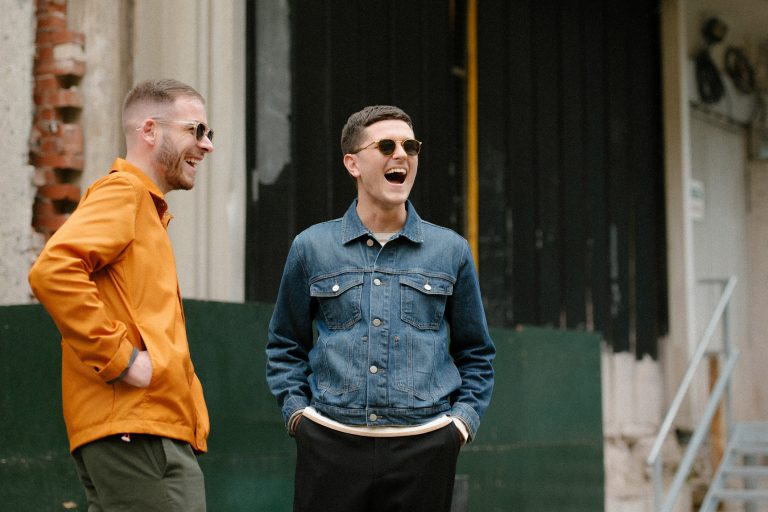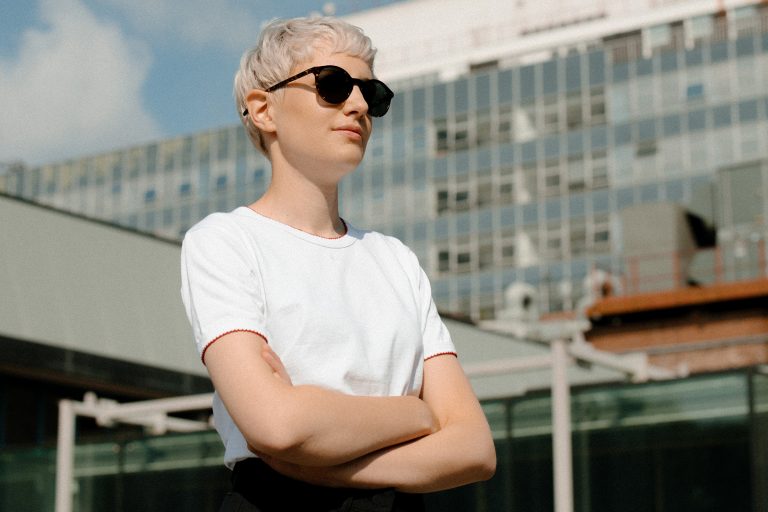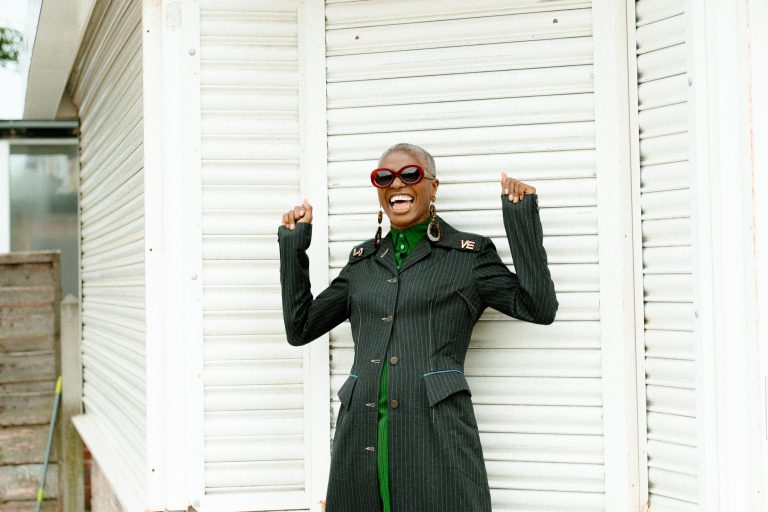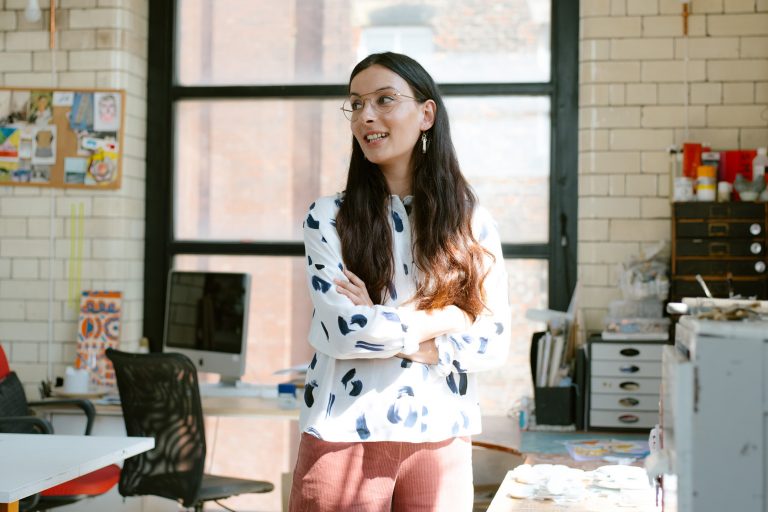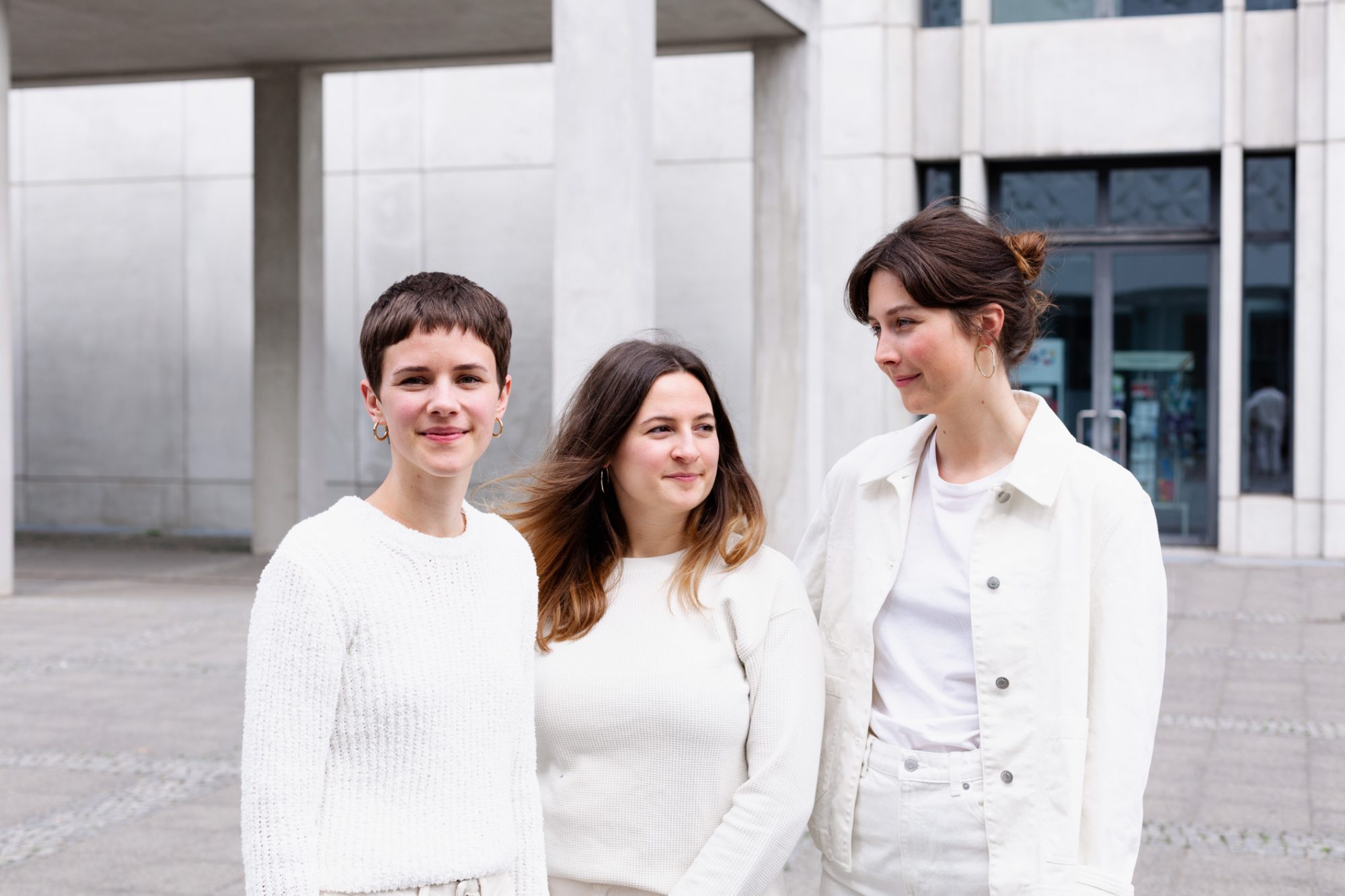
Makers, not Muses
While studying together, Silva Baum, Lea Sievertsen and Claudia Scheer quickly noticed a severe lack of women in the curriculum and conferences they were being presented with. So they created a platform to showcase and learn from their role models.
Words by Anna Dorothea Ker
Photography by Mina Aichhorn
The kinds of conversations that Silva Baum, Claudia Scheer and Lea Sievertsen bonded over during their master’s studies in graphic design at the Hamburg University of Applied Sciences led them to question why so few women were being presented in their curriculum, lectures and on the stages of design conferences. The friends began to investigate, reading up on gender studies, speaking to their classmates and lecturers, and dedicating their studies to enhancing the visibility of women in design.
Their sense of purpose was accelerated when, following a presentation of their research proposal, a male professor told them that gender inequality had ceased to be an issue in the 1980s, when feminism fulfilled its goals. If you look back throughout art history, he said, there are many examples of women – it’s full of muses. This misguided belief, as infuriating as it was to hear, struck at the heart of the matter: women aren’t here to be portrayed by men, but to create in their own right. And so Notamuse found its name and began to take shape as an online interview series, a forthcoming book, and a movement that’s gaining traction around Europe. In their own words, Silva, Claudia and Lea take the story from here.

Left to right: Notamuse’s Lea, Claudia and Silva at Claudia’s studio in Berlin
On how Notamuse came to be…
Claudia: We all have quite different backgrounds and approaches, but when we met we started a lot talking about the visibility of women in the field of graphic design. One of the main topics we discussed was the visibility of women at conferences and talks, both in and outside of the university context. There seems to be a very set presentation format – that is, it’s usually men who get to speak. When you’re at a conference and look at the gender balance on the programme, the numbers speak for themselves. Another important related issue is role models – especially as we were all in a phase of transition when we started the project. We were thinking, “we’re going to graduate soon – what happens next? What are the opportunities out there? How can we start to live out our profession?” The role models we were being presented with were pretty one-dimensional. These were the kinds of question that led to us to say to ourselves, “we have the chance to do a master’s, with lots of time and energy and motivation, as well as great supervisors, and it would be good to put all of this into a project that contributes to creates a sustainable sense of awareness, that inspires reflection and discussion on these topics.”
Silva: That was in 2016. There was quite a long lead-up phase, where we were just talking about it a lot. Lea had already had the idea of exploring the topic [of the representation of women in graphic design] in her thesis, and we came to realise how interesting the questions surrounding it are – that there’s so much to explore with this topic.
Lea: We were also asking ourselves whether our perspective on this was universal – whether our points of view were limited by the kinds of conferences we were attending, whether it was just a coincidence that we were basically only seeing men in the industry. We needed to check the extent to which our feelings aligned with the reality of the industry. None of us was particularly politically active beforehand or had really defined our positions within feminism, so we started to read, to observe what was happening, and it all spiralled from there, out into design history and design education – our research led us into so many different disciplines.


Lea Sievertsen, whose initial research into the representation of women in graphic design provided the initial spark for Notamuse
Silva: We started to ask our friends and lecturers about the women designers they knew because it occurred to us that perhaps we simply weren’t well-educated enough to see the full picture. We soon realised we weren’t alone in our inability to tally up large numbers of female designers, at least a lot fewer than men. Especially when it came to seeing women up on stage. Most of the people we spoke to also had this ‘aha’ moment, saying, “I haven’t really thought about it, but now that you mention it…”
Claudia: Especially as in the university context, there are generally a lot more female students, so you’re forced to ask yourself, where do all the women go after they graduate?
Silva: We began the interviews at the start of 2017. We still had a lot of unanswered questions, so we started emailing designers to ask if we could interview them for the project.
Lea: At the start, we didn’t have a concrete idea of what the project would become. We started to reach out to women with different theoretical backgrounds, like sociology or design history – though we didn’t know how we’d use the interviews. At the time, we had the idea to do a blog and turn them into short essays. But we found the interviews so interesting that we realised that they were complete as they were – and that we didn’t have to turn them into anything else. In the second phase of the project, the idea for the website slowly began to take shape. We were so excited when the theorists that we spoke to when we first started out, confirmed our thinking. So we began to compare notes and fill in the gaps to get a sense of the bigger picture. This resulted in a catalogue of questions that allowed us to compare interviews side by side and get a sense of the patterns and commonalities across each interview.
Claudia: The first interview round was very much grounded in theory – sociologists, researchers, gender theorists. For the second round, we wanted to confirm this theory with real-life examples. So we took the questions and learnings from the first round to practicing designers.

Silva Baum, designer of the typeface used throughout the Notamuse project
On the common themes linking each interview…
Claudia: I was particularly impressed by our conversation with Studio NOI in Switzerland, run by Simone Koller and Corina Neuenschwander. They both decided to go freelance in order to be able to have a family. They both had the feeling that they’d be left behind as women if they returned to work at their office, be given fewer responsibilities. They wanted to stay flexible and collaborative and shared super practical insights on exactly how they went freelance. I found the interview we did with them especially interesting.
Lea: I thought so too, especially as you’d think that going freelance just before you have a child would be very challenging – but instead motherhood was exactly why they did. I thought that was so courageous.
Claudia: In general, the topic of motherhood came up in almost all of our interviews. Even if women decided against having a family, they were still confronted with related issues – like being turned down for a role because of the mere chance that they might get pregnant. As if the same didn’t apply for men, as potential fathers.
Lea: Apart from that, the passion each interviewee had for her craft, and the drive, their energy, stood out for me. We met so many women who were motivated to do excellent work, get great clients and commissions. And then when it came to planning a family, they were determined not to have to compromise. They believed they could do both, and they did – that was really inspiring.
Silva: The idea that you can create your own solutions, that there are so many different ways of working as a designer – there’s a lot that’s open for us.
Claudia: On the one hand, it was really encouraging to see how people went about finding solutions, but it also brought to light how much there is still left to be done.
Silva: It was also interesting to see how many behaviours that people might assume were individual traits were actually structural factors that have arisen from the way women —well, girls — are raised. For example, a lot of the women we met were reluctant to be on social media and weren’t really comfortable with self-promotion. A few designers did more of it, of course, aware of the importance of awards and gaining recognition, which brings in better contracts, and some left it to their male counterparts. Personally, I used to put this down to the fact that I’m not so clued up about social media, or that I’m on the shier side, but knowing that almost every woman we spoke to felt the same way, you start to reflect on whether it really is down to personal preference, or if it has to do with the way girls are brought up – not to shout about themselves. It seems to come more naturally to men to chase competition.
Lea: I found our conversation with Isabel Seiffert of Offshore Studio really inspiring. She spoke about having to constantly push herself to get her work out there, to promote her studio, to say yes to every request that came her way, and to make the most of opportunity, even though it didn’t necessarily come naturally to her. I think we all took a lot of encouragement from that, as all three of us aren’t the loud, attention-seeker types. The Kickstarter campaign, and keeping up the momentum on social media – those were really challenging at first. I think we’ve all come a long way since the project started, by implementing what we’ve learnt.


Claudia Scheer has been a practicing graphic designer since 2015, when she established Studio Muskat
On what we can expect from the Notamuse book…
Claudia: As we were deciding what to do with our interview material, we were also looking at history books, which have traditionally excluded women, as design history has largely been written by men. To redress that, we’d essentially have to rewrite history. So we quickly came to the conclusion that we wanted to turn the interviews into a book – in addition to a website, which of course has greater reach. We wanted to take the kind of work you might otherwise scroll through quickly online and put it into a book, so as to immortalise it. And to write women back into the history of design.
Silva: It’s still mostly men who publish books explaining their work and their lives, and we hope that the book might go one step towards rebalancing this.
Claudia: We can’t claim to be providing a comprehensive compendium that provides a full A to Z of female designers, of course. But we wanted to capture a moment in our professional lives, and realise that in a physical form. Once we graduated, we decided to write an exposé and send the proposal to a variety of publishing houses – now we’re bringing it out together with Niggli Verlag.
Lea: All three of us have pretty different approaches, and the process to get the book to the final format was a long one. We have many, many drafts, and made a lot of compromises – though that makes it sounds like we had to sacrifice things. What I actually mean is that we worked together very intensively, right up until all three of us were happy with everything. I’m still really happy with the outcome – I hope you are too?
Claudia: Yes!
Silva: Yes! I mean, it’s pretty challenging to publish a book collaboratively and to do a good job with it. All of us had experience in book publishing, but this was something else.
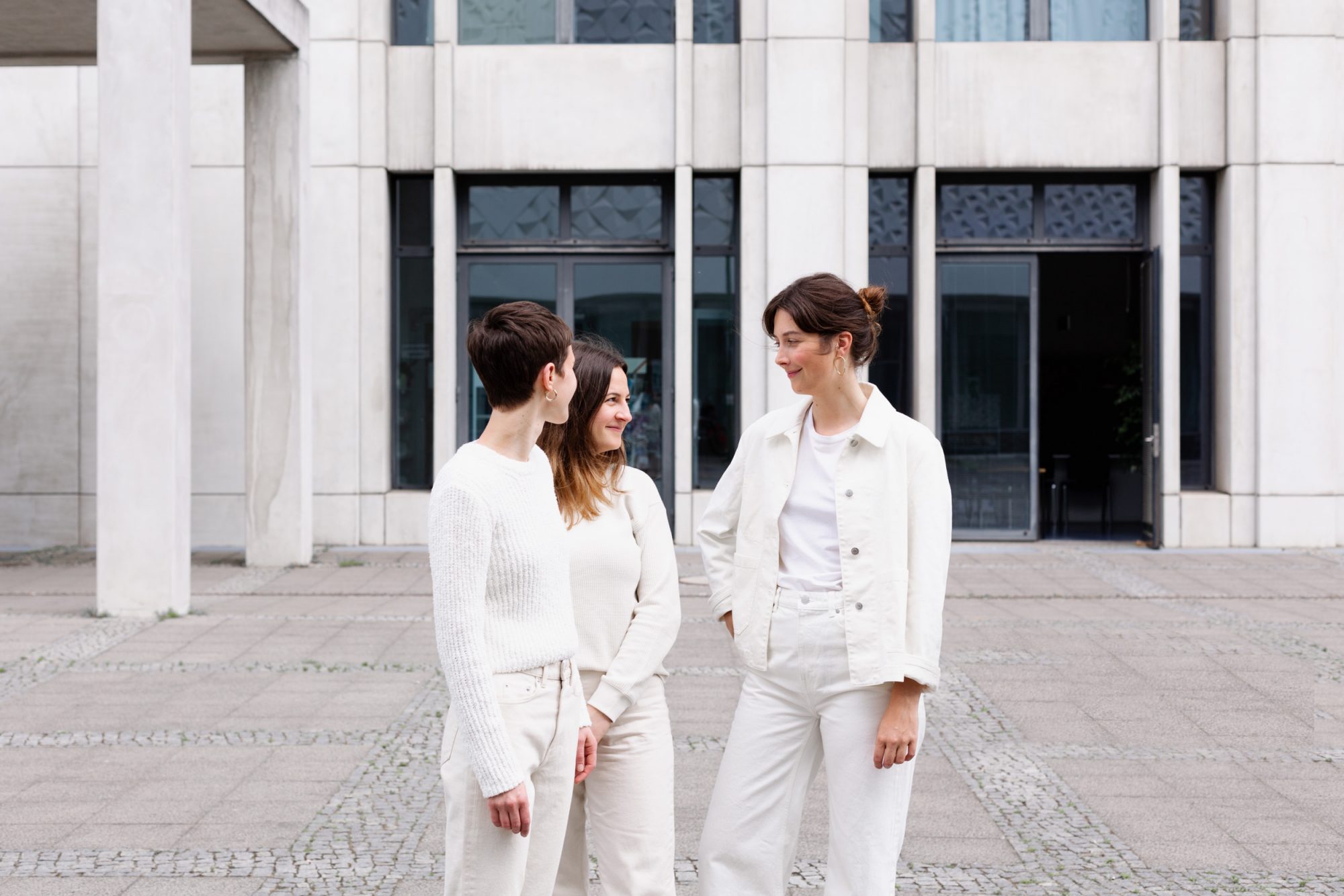
Lea: We’re definitely different when it comes to design approaches. I’ve noticed that Silva and I like to make elements on a page bigger or narrower, while Claudia likes to give them more room to breathe. But we made all of our decisions together democratically. We had a pretty solid design concept from pretty early one, based on the principles and values of the project – like making space, and taking up room. That provided good guidelines for making design decisions.
Claudia: I wanted to add that the most special element of our entire design process is our typeface, which Silva designed. The type and colour give the most character, and so it was really nice that it came from one of us.
Silva: I’m still really pleased with the fact that with Notamuse, we’ve created something that none of us could have done by ourselves, yet it’s harmonious and reflects all three of us equally. We’ve created a new voice for ourselves.
Silva: We all studied our bachelor’s degrees at different universities. And of course, when you first learn ‘the rules’ you don’t question them – you assume that’s just how it’s done. Then when we came together, we found that there were three different sets of rules [laughs]. That was interesting to learn too, that what you learn at university is often relative – it can come down to, say, the opinion of your lecturer.
Claudia: But it was all constructive. We never butted heads or took anything personally.
Silva: I’ve been asking myself since whether this reflects the way that women work together. None of us pushed her own agenda, or insisted that her own style or her ego come to the fore – it was kind of the opposite, no? There were days when I felt uncomfortable at the end of them because I’d perhaps gone too far towards overruling your suggestions, and so I resolved to hold back a little the next day.
Lea: That makes me think of a text in the book “Women in Graphic Design” featuring Sheila Levrant de Bretteville, which outlines feminist ways of working, and holds that the way women design is a totally different kind of practice – a collaborative journey, which is reflected in the final outcome.


On the project’s impact so far – and what’s next…
Claudia: It’s taken off far beyond what we could ever have imagined, which has really pushed us individually, as we’ve been invited to speak in seminars and at biennales and design universities, which we’d never done before – though of course, thanks to everything we’ve learnt through the project, we’ve gained the confidence to do it, although it still feels a bit scary sometimes. Like giving talks in English, our second language.
Lea: This month is pretty full of talks, right?
Claudia: Yes! We’ve also been working together on a research project with AIGA on a study that looks at graphic design conferences worldwide and examines the gender ratio of their speakers. We’re also currently in the process of figuring out what’s next, for us all professionally as well as with the project.
Silva: Yes, but overall it’s definitely been more of a success than we’d expected – from the very first reply we got to our email, to finding a publisher, to being approached by AIGA, and invited to give talks. When we first started out, we allowed ourselves to dream a little and say, “imagine if we were invited to give a talk about the project ourselves one day!” Then, one year later, it’s happening.
Claudia: It’s worth stating that we’re not earning any money with Notamuse, though.
Lea: We had a really good planning session recently, to figure out what’s next, and how we can make the most of the networks we’ve built up to continue the project’s momentum. We definitely have a few ideas for the future!


On the biggest roadblocks to gender equality in design…
Silva: I would say it’s not to do with design itself, but with care work. If it was accepted – and expected – of men to take the same amount of time off as women do to raise children, then women wouldn’t have so many challenges with pay negotiations, or even with getting jobs in the first place due to the “danger” that they might leave after a few months due to pregnancy.
Lea: I’d add — and I think this is more industry-specific — that the issue of self-promotion is more challenging for women due to socialisation, education and the way in which girls are raised. So much of your work as a designer, especially when you’re freelancing, is about how you promote your work and present your image, which women are often a lot less comfortable doing. I think we need to get better at it, to realise its importance and work on having more confidence in our own abilities. A related issue is that there are still so many boys clubs out there. Men tend to be natural networkers, ask favours of each other, talk about things, go and drink a beer after work together – which is a lot harder for women who have children to look after, for example.
Claudia: I think the expectations and pressures on women and those who identify as women are highly problematic. There are so many deeply entrenched double standards – like, for example, when a man and a woman are both really confident. While the man is seen as motivated and full of purpose, and the woman is called arrogant. It’s these weird, old, traditional fallacies that need to be broken up.
Silva: What can be done is to disrupt the clubs and the networks – by, say, not just inviting the three first designers that come to mind or with whom you went to school to speak at a conference, but to look beyond your bubble to make sure speaker line ups are more diverse.
Claudia: I’ve noticed that a lot of these presumptions and expectations are entrenched in my own belief systems and thought patterns, too. I think we each need to start with ourselves, and to question why we think and act as we do – to ask, “why am I sending my male counterpart to a talk, and not going myself?” Of course, we don’t believe that the fight for gender equality is only a women’s fight. Or that only women will profit from it. All genders need to be part of the conversation so that society as a whole can benefit.
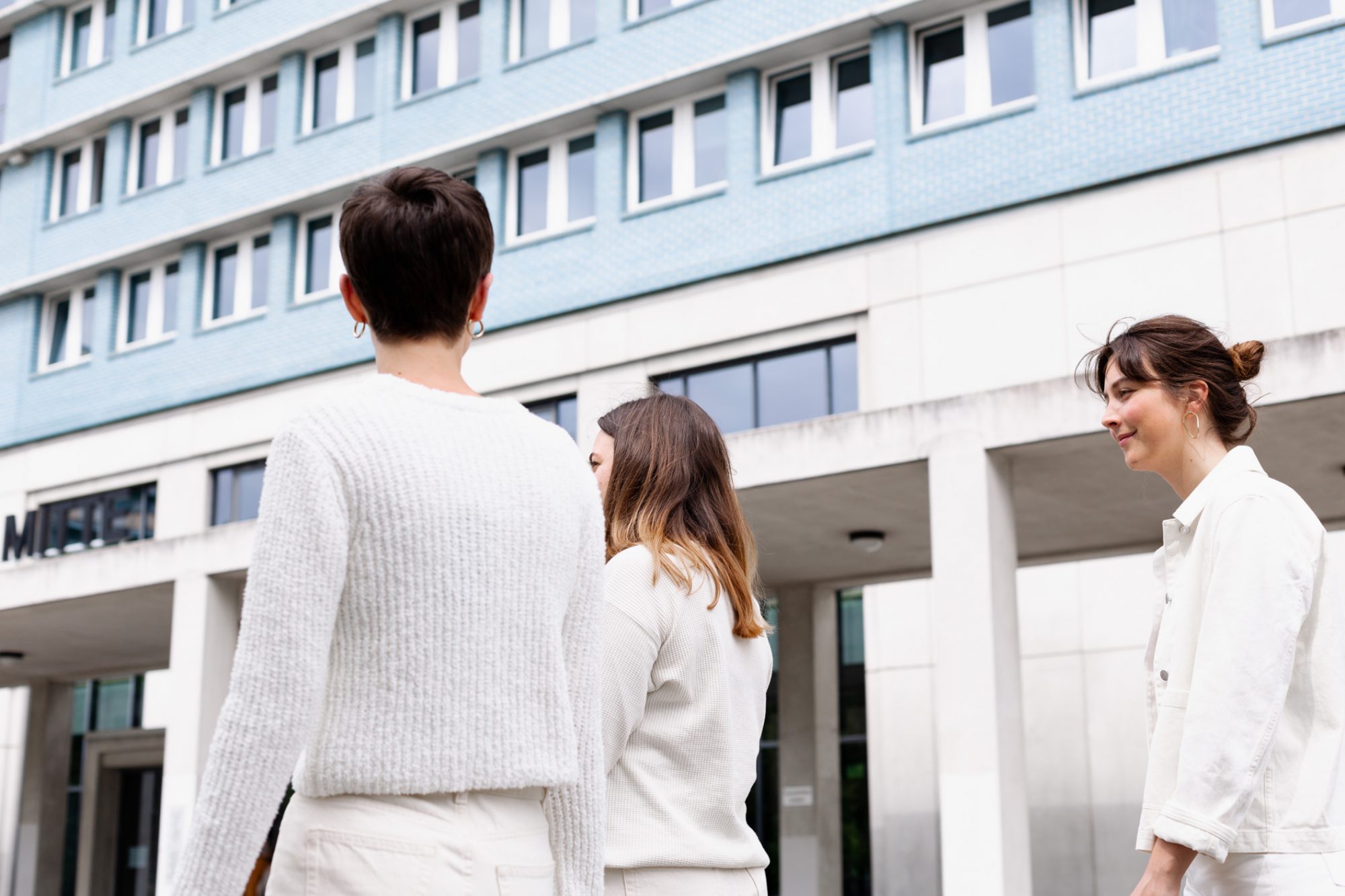
We adore this project and were delighted when we discovered it through our collaborator and friend Brit Seaton, thanks Brit! We’d love you to support Notamuse too and help to share their story far and wide. A great way to get behind the trio is to pre-order your copy of the stunning Notamuse book from their publisher Niggli right here. This interview was led, translated and written up by Anna Dorothea Ker, who convinced us to abandon our regular feature format to allow Claudia, Lea and Silva to tell their story in their own words, just like they allow their interviewees at Notamuse to do. You can follow Anna here. Notamuse were photographed in Friedrichshain, Berlin by the wonderful Mina Aichhorn. Be sure that you’ve got Mina’s Instagram in your feed by clicking here.



